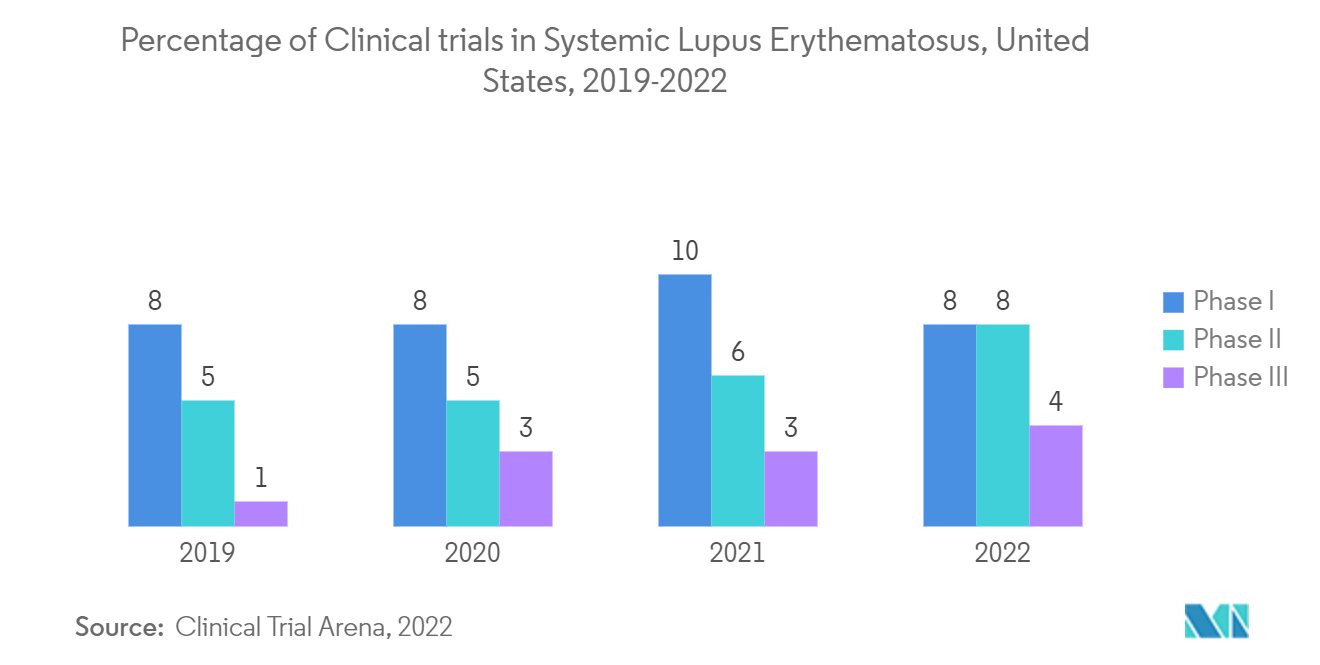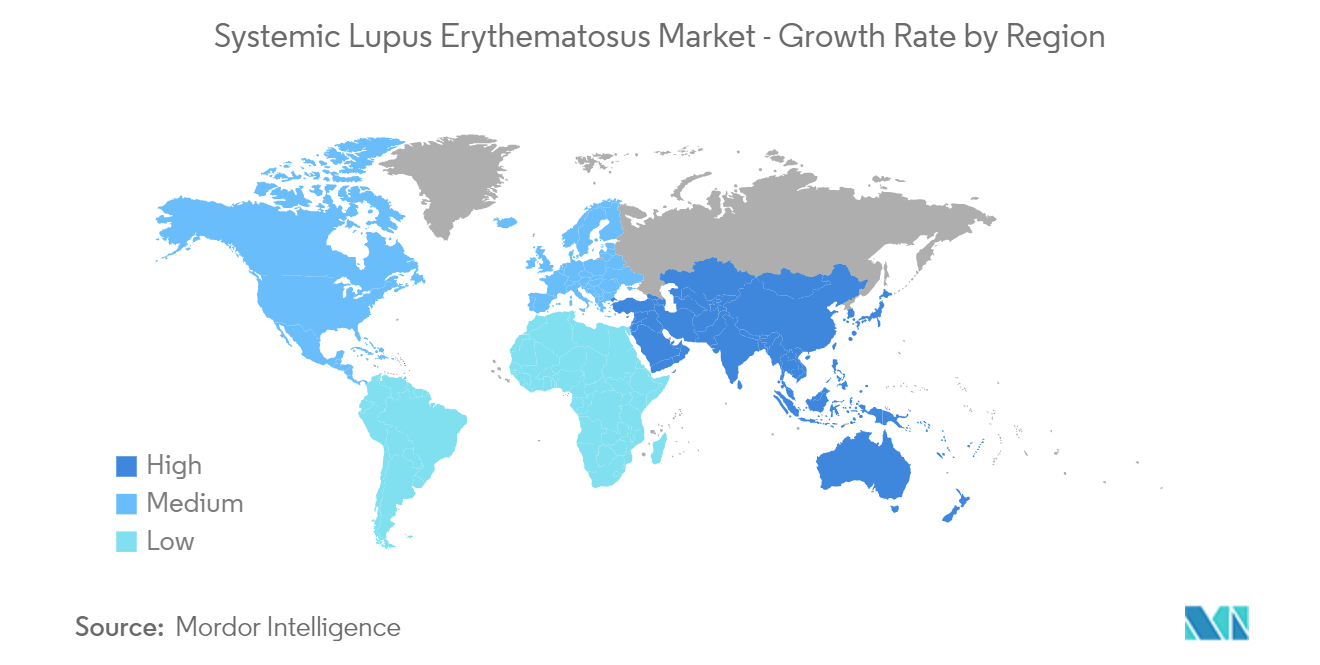Market Trends of Systemic Lupus Erythematosus Industry
This section covers the major market trends shaping the Systemic Lupus Erythematosus Market according to our research experts:
Biologics Segment is Expected to Witness a Significant Growth Over the Forecast Period
Biologic drugs target specific pathways i.e. T-B lymphocyte interaction, cytokines, and complimentary system, and have been proposed as a tool for SLE treatment. B-cell targeted therapies, including anti-B lymphocyte stimulator (BLyS) and anti-CD20 monoclonal antibodies are at forefront of SLE treatment. Biologics are designed to interact with the immune system in certain ways, making them a more targeted treatment option. They bind with high specificity to their targets on intracellular components or cell surfaces. Thus, biologics are better as compared to others due to the side effects caused by other treatment modalities such as cardiovascular damage caused by NSAIDs. Furthermore, according to an article published by National Resource Center on Lupus, in November 2022, several investigational biologic drugs have already been approved by the FDA for treating other conditions and are now being studied for SLE and other treatments which are not yet approved for any diseases and are not on the market or available to any individuals except those in clinical trials. These drugs are Blisibimod (like belimumab (Benlysta)), which was been designed to block signals that come from a protein, Lupuzor which was developed to change the behavior of a specific type of T cell involved in lupus disease activity, Rituximab (Rituxan) approved for the treatment of lymphoma and rheumatoid arthritis that targets a specific protein called CD20 on the surface of B cells, and Ustekinumab (Stelara) that targets a protein that becomes unregulated due to a particular imbalance in how T Cells develop in lupus. Therefore, such an increase in the development of SLE biologic drugs is expected to drive the growth of the segment.
Furthermore, an increase in biologics clinical study for the treatment of SLE is a factor driving the market growth. For instance, in June 2021, Biogen Inc. announced that the first patient has been dosed in the global clinical study, TOPAZ-1. The Phase 3 study will evaluate the clinical efficacy and assess the safety of BIIB059, a first-in-class, humanized IgG1 monoclonal antibody (mAb) targeting blood dendritic cell antigen 2 (BDCA2), as compared to placebo, in participants with active systemic lupus erythematosus (SLE). TOPAZ-1 is expected to be conducted at approximately 135 sites worldwide and aims to enroll 540 adults with active SLE. Such an initiative is expected to drive the market. As a result, the aforementioned reasons will likely contribute to this segment's strong growth over the forecast period.

North America is Expected to Dominate the Systemic Lupus Erythematosus Market Over the Forecast Period
North America is expected to hold a significant market share in the global systemic lupus erythematosus market owing to increased awareness about the disease, better healthcare infrastructure, and a growing number of foundations and independent venture groups supporting biopharmaceutical manufacturers. This is boosted by the many non-profit organizations and funding communities supporting the cause. For instance, in October 2022, the National Institute of Arthritis and Musculoskeletal and Skin Diseases of the National Institutes of Health-funded USD 8.30 million to identify biomarkers of drug resistance and to develop new approaches to care for pediatric SLE. Additionally, in September 2022, the Lupus Research Alliance's 2022 Global Team Science Awards (GTSA) grant provided USD 3 million for 3 years to researchers working tirelessly to advance lupus research. Thus, it is expected to fuel the overall market growth during the forecast period.
In addition, the burden of growing autoimmune diseases also fuels the growth of the systemic lupus erythematosus market. As per the study published by, the National Library of Medicine, in April 2021, the number of systemic lupus erythematosus cases in the United States was 72.8 per 100,000 person-years. Furthermore, according to an article published by the American College of Rheumatology, in June 2022, site monitors and coordinators were provided with study toolkits to educate SLE patients and families about the clinical trial process and assist sites in raising awareness of the study through local outreach. Therefore, the growing prevalence rate of systemic lupus erythematosus along with the increased awareness about the disease is expected to increase the demand for effective treatment which eventually is expected to drive the market. Thus, owing to the abovementioned factors, the studied market in the North American region is expected to project growth over the forecast period.

